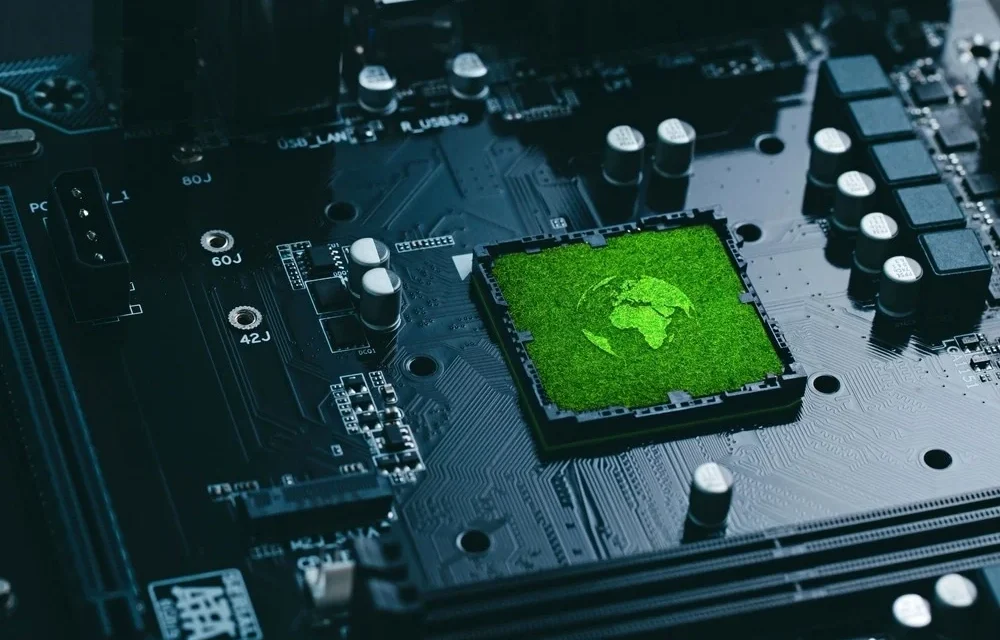The production of semiconductors, while essential to modern technology, raises several environmental and sustainability concerns. These concerns primarily involve the extraction of raw materials, energy-intensive manufacturing processes, chemical usage, waste generation, and the environmental impact of electronic waste. Below are the key environmental and sustainability issues associated with semiconductor production:
1. Raw Material Extraction
- Mining for Materials: Semiconductor manufacturing relies on materials such as silicon, rare earth elements (e.g., cobalt, lithium, and tantalum), and metals like copper and aluminum. The extraction of these materials can lead to environmental degradation, including habitat destruction, water pollution, and soil erosion.
- Deforestation and Ecosystem Damage: Mining operations often contribute to deforestation and loss of biodiversity, as ecosystems are disrupted to access valuable minerals needed for semiconductors.
2. Energy Consumption
- High Energy Use in Manufacturing: Semiconductor production is highly energy-intensive, particularly during stages like wafer fabrication, photolithography, and etching. The process requires significant amounts of electricity to operate complex machinery and maintain ultra-clean environments.
- Carbon Emissions: The electricity used in semiconductor manufacturing often comes from fossil fuel-based power sources, leading to high carbon emissions. The energy demand is expected to increase as more advanced semiconductors are produced, raising concerns over the carbon footprint of the industry.
3. Water Usage and Pollution
- Water-Intensive Processes: Semiconductor fabrication requires large amounts of ultra-pure water to clean wafers and rinse chemicals used in the production process. Water scarcity in certain regions can exacerbate concerns over the sustainability of such water-intensive operations.
- Water Contamination: Chemical waste from the manufacturing process can contaminate local water sources if not properly managed. Hazardous substances, such as acids and solvents, can leak into the water system, harming ecosystems and communities.
4. Chemical Waste and Hazardous Materials
- Toxic Chemicals: Semiconductor fabrication involves the use of various hazardous chemicals, such as solvents, acids, and gases (e.g., fluorine-based compounds). Improper disposal or leakage of these substances can have significant environmental and health impacts.
- E-Waste Generation: The rapid pace of technological advancement leads to obsolescence of semiconductor-based devices. Electronic waste (e-waste), which contains valuable yet toxic materials like lead, mercury, and cadmium, poses a major environmental issue if not properly recycled.
5. Greenhouse Gas Emissions
- Perfluorocyclopropane (C3HF7) and Other GHGs: Certain chemicals used in semiconductor manufacturing, such as perfluorinated compounds, are potent greenhouse gases. These chemicals are typically used in processes like plasma etching and cleaning but have a high global warming potential if released into the atmosphere.
- Chlorofluorocarbons (CFCs): Though largely phased out due to their role in ozone depletion, some legacy semiconductor manufacturing processes still use gases that harm the ozone layer and contribute to global warming.
6. Packaging and Waste Management
- Packaging Materials: Semiconductor devices are typically packaged in materials such as plastics, epoxy resins, and metals. The production and disposal of these packaging materials can contribute to plastic waste and pollution.
- Waste Disposal: The production process generates a significant amount of scrap material, including silicon wafers, chemicals, and other waste. Effective waste management and recycling systems are crucial to mitigating the environmental impact of semiconductor production.
7. End-of-Life Disposal and Recycling
- Electronic Waste (E-Waste): As semiconductor technology advances, old electronics containing semiconductors become obsolete and contribute to the growing e-waste problem. Improper disposal of e-waste can lead to the release of hazardous materials into the environment.
- Recycling Challenges: While some semiconductor components can be recycled, the process is complicated and expensive. Many components are difficult to separate, and valuable materials may be lost if recycling systems are not optimized.
8. Supply Chain Impact
- Environmental Impact of Global Supply Chains: Semiconductor production involves a complex global supply chain, with materials sourced from different parts of the world. Transportation of raw materials and finished goods across long distances adds to carbon emissions and environmental degradation.
- Concentration of Production: The concentration of semiconductor manufacturing in certain regions (e.g., Taiwan, South Korea) can lead to local environmental stress, including land use change, increased energy demand, and waste generation.
9. Resource Scarcity
- Depletion of Critical Materials: Some materials used in semiconductor production, such as rare earth elements, are finite and subject to supply chain disruptions. As the demand for semiconductors continues to rise, there is growing concern over the long-term sustainability of these materials, especially in the context of geopolitical tensions and resource shortages.
10. Social and Ethical Concerns
- Labor Rights and Social Impact: Mining and manufacturing of semiconductors can sometimes involve poor labor practices, unsafe working conditions, and exploitation of workers. Additionally, communities near semiconductor manufacturing plants may face environmental and health risks due to pollution and resource depletion.
While semiconductors are critical to the development of modern technologies, their production raises significant environmental and sustainability challenges, including resource extraction, energy consumption, water usage, and chemical waste. As demand for semiconductors grows, the industry faces increasing pressure to adopt greener practices and improve the lifecycle management of its products. Sustainability initiatives, such as using renewable energy, improving recycling, and reducing hazardous materials, are steps toward mitigating these environmental impacts.














